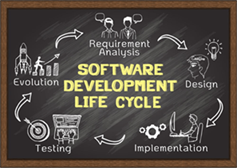Content
The idea developed by Kent Beck was to use best programming practices but take them to the extreme – hence the name. As such, none of the individual concepts of XP are really new, but their application and combination is what makes XP different. With RAD, the development team is working very closely with the investor or prospect. Hence, with a unified vision, this methodology is useful for big projects. Indian app developers company increasingly becoming versed in collaborative and fast-paced development protocols such as DevOps.
What is the ideal #methodology for your #appdevelopment? Learn in this blog about Rapid Application Development #RAD vs #Agile. https://t.co/WQL7L0fc0e @shanselman @AltSchoolAfrica @lukOlejnik @debraruh @JosephSteinberg #software #development #business #digitaltransformation
— WisdomPlexus (@wisdomplexus) December 5, 2021
Rapid application development has emerged as the software development model to address the shortcomings of the waterfall model of software development. As for clients, they must commit to providing frequent feedback during the iterative, on-going rapid application development process. The RAD approach also matured during the period of peak interest in business re-engineering. The idea of business process re-engineering was to radically rethink core business processes such as sales and customer support with the new capabilities of Information Technology in mind. RAD was often an essential part of larger business re engineering programs. The rapid prototyping approach of RAD was a key tool to help users and analysts “think out of the box” about innovative ways that technology might radically reinvent a core business process. It focuses mostly on breaking down the project into features, each built in a different sprint .
What Are The Phases Of Rapid Application Development?
With a recent prototype prepared, RAD developers present their work to the client or end-users. They collect feedback on everything from interface to functionality—it is here where product requirements might come under scrutiny. For most IT shops RAD was a new approach that required experienced professionals to rethink the way they worked. Humans are virtually always averse to change and any project undertaken with new tools or methods will be more likely to fail the first time simply due to the requirement for the team to learn. Although much of the literature on RAD focuses on speed and user involvement a critical feature of RAD done correctly is risk mitigation. It’s worth remembering that Boehm initially characterized the spiral model as a risk based approach. A RAD approach can focus in early on the key risk factors and adjust to them based on empirical evidence collected in the early part of the process.
- The iterative design and access to UI/UX components of a system puts feedback at the forefront of the process.
- Both have as their goal the shortening of time typically needed in a traditional SDLC between the design and implementation of the information system.
- In rapid development environment, the client is there every step of the way and the developer has the opportunity to present their work frequently.
- The requirements are composed of ‘user stories’ that can be scheduled into a particular release and iteration.
- In this article, we’ll highlight the difference between the two most popular software development methodologies Rapid Application Development and Agile.
- The traditional SDLC follows a rigid process models with high emphasis on requirement analysis and gathering before the coding starts.
Traditional software development methods, like waterfall, follow rigid process models that put pressure on customers to sign off on requirements before a project starts. Customers often don’t see a working build for several months, which complicates the change process for new requirements and feasibility adjustments. RAD or Rapid-Application Development or Rapid-Application building is a a general term, used to refer to adaptive software development approaches, as well as the name for James Martin’s approach to rapid development. In general, RAD approaches to software development put less emphasis on planning and more emphasis on an adaptive process.
Engineering
Long-time partner Canon then tasked Keypoint with building a cross-platform mobile front-end engagement solution complete with a backend content management system. A traditional team of 10 may have delivered the product in between 6-months and a year, but two developers equipped with our RAD tools delivered both mobile apps in just under three months.
Usher:Beef? – raised on the purity of gods sweet and abundant grasslands much like the grooms rad ponytail?
Or salmon – the agile platinum jewel that fights against the ravages of the torrent to get to where it needs, and loves to gobble worms, sweet, rad, ponytailed worms.— Brian Harkin (@brian_harkin) December 9, 2021
The customer can quickly review the prototype, talk to investors in the meantime, showing them what the product would look like, and make changes much more easily. Clickable prototype – this type of prototype already begins to have rudimentary User Experience design so that you can see where each of the buttons lead. Sometimes clickable prototypes are entirely designed in terms of UI; sometimes it’s just to show the functionality and the final designs are approved later. A prototype is a version of the product that mimics what that actual product will look like, and it can complete the same functions, which allows for a faster output of the created element.
The Rapid Application Development Model
RAD and agile models exploit this by welcoming changes in requirements even late into the development process. Although contrived back in the 1980s, the use of rapid application development is currently proliferating and used as an expediting methodology for digital transformation in 2018 and beyond. During the 1970s, software engineering projects followed the waterfall model, a traditional engineering process, which is similar to the methodology applied to building bridges and huge physical plants. In this methodology, software architects work together with the stakeholders who requested for the software to draft functional requirements, then spend countless hours interpreting them in specifications sheets. Development begins only after all the specifications were completed. Then, after months or sometimes years of development, the stakeholders and end users of the software get their first look at the completed software product.
Collecting all the requirements together and making detailed documentation that will be the basis of all future actions. Here we are going to provide a detailed comparison of these three methods.
Under this methodology, each day ends or begins with a stand-up meeting to monitor and control the development effort. If you have a tight deadline, rapid application development is your best bet. If you’re under pressure to deliver something that works, then opting for a RAD platform is always suitable. The developers are able to make adjustments quickly during the development process. In this article you will learn ins and outs of rapid app development based on Softermii’s experience. By this time, the RAD design workshop will have generated excitement, user ownership, and acceptance of the new application.

The professionals, as well as the tools, operate in an interactive way, with great participation of the team in the tasks. During this stage, developers, clients , and team members communicate to determine the goals and expectations for the project as well as current and potential issues that would need to be addressed during the build. During this step, stakeholders sit together to define and finalize project requirements such as project goals, expectations, timelines, and budget. When you have clearly defined and scoped out each aspect of the project’s requirements, you can seek management approvals. Better risk management as stakeholders can discuss and address code vulnerabilities while keeping development processes going. Uses small teams to produce small pieces of deliverable software using sprints, or 30-day intervals, to achieve an appointed goal.
In the planning phase, both the development team and the customer needs to have a clear vision about the final product. At the beginning of the project, both the development team and the stakeholder team gather to build a project plan based on the project requirements. This model is mainly user interface focused and is mainly used for prototyping to incorporate and evaluate changes based on client feedback. Software Engineering Stack Exchange is a question and answer site for Application software professionals, academics, and students working within the systems development life cycle. The products in this category help teams craft interactive designs at impressive speeds. And some tools on this list, like Webflow, allow designers to export the completed design as a functional cross-browser prototype. You can get around this requirement by relying on data synthesis, a process which generates fake data to resemble in approximation the data set your end-users expect.
Institutional investors double down on Rad Power Bikes with $154M Series D raise – TechCrunch
Institutional investors double down on Rad Power Bikes with $154M Series D raise.
Posted: Thu, 28 Oct 2021 07:00:00 GMT [source]
Browse other questions tagged agile development-process rad or ask your own question. Stanley Idesis, a perennial American sweetheart, was on the direct path to become a mild-mannered power plant employee when he was bit by a radioactive programming spider! He applied those skills to mentoring students and writing courses for ed-tech.That was great and all, but then that blasted bug bit him again!
The traditional SDLC follows a rigid process models with high emphasis on requirement analysis and gathering before the coding starts. It puts pressure on the customer to sign off the requirements before the project starts and the customer doesn’t get the feel of the product as there is no working build available for a long time. Rapise is the most powerful and flexible automated testing tool on the market.

An agile method, much like rapid development, relies too much on client interactions and feedback throughout the development process. Naturally, if the customer isn’t taken into confidence about the features and requirements at every stage, the project can be derailed or out of tune with the agile process.

The nature of this consistent feedback enables developers to adjust models incrementally until project requirements are sufficiently met. Stakeholders communicate and learn through experience, quickly and easily identifying what does and doesn’t work. The rapid nature of releases means errors are far more likely to be discovered earlier, which leads to a reduction in errors and debugging. Rapid application development is a methodology that focuses on developing applications rapidly through frequent advantages of rad iterations and continuous feedback. As the increasingly competitive software market emphasises a stronger demand for new applications, the IT industry is feeling pressure to deliver working products faster, and RAD is becoming a necessity. Prototypes can be usable and can evolve into the completed product. One approach used in some RAD methods was to build the system as a series of prototypes that evolve from minimal functionality to moderately useful to the final completed system.
We guide our clients to become adaptive, fast-learning businesses – capable of rapidly delivering customer value and innovation for competitive advantage. This is the main course of the RAD methodology—and what sets it apart from other project management strategies.
Therefore, it is critical that tests created one day, continue to work seamlessly the next. When your company requires better agile software development tools, there are a lot of choices in the marketplace. However, if you want the best in agile software development with there is only one solution.
